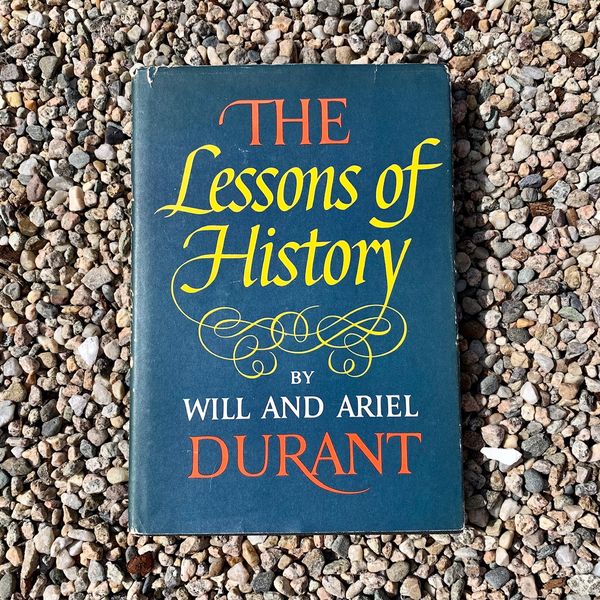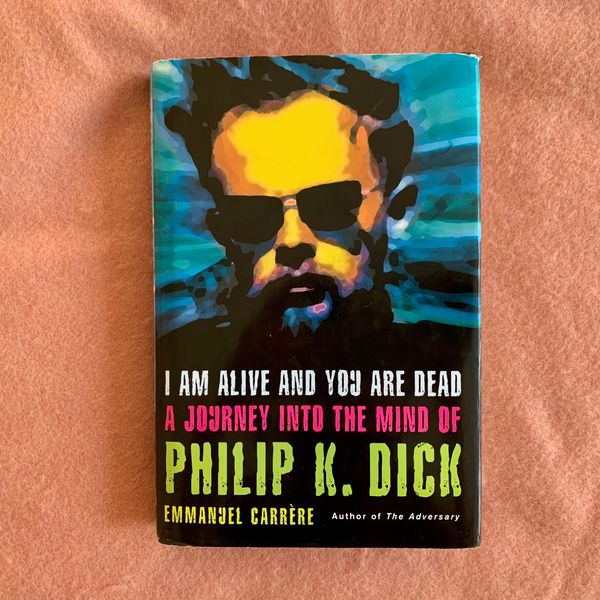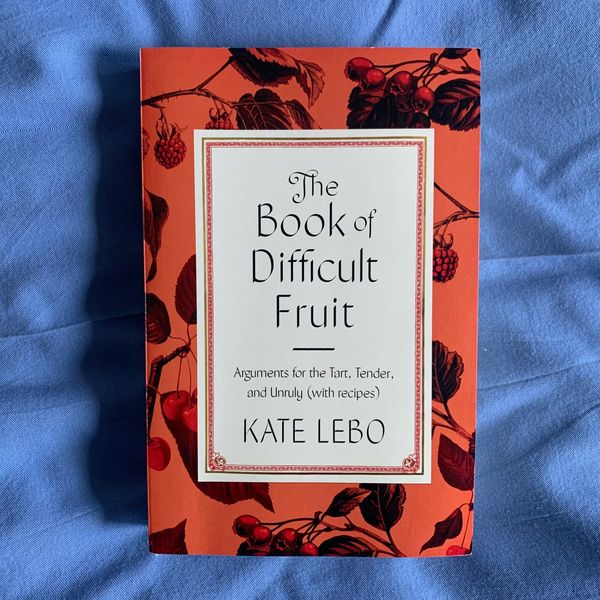
I was around 14 when I got punched in the face for the first and (so far!) only time. The punch, which came from my younger brother and was justified, landed somewhere in the eye/upper-nose region. I remember seeing stars and thinking, Just like in the cartoons! As my fellow punchees know, these stars are not your classic pentagrams but more like a shower of twinkles against a dark backdrop. Although that day marked my first received punch, it was not my first experience of life imitating cartoon. Life seems filled with situations that imitate cartoons until you get to the age where you understand that, actually, it’s the other way around and that some animator must have drawn the first knockout stars based on his personal recollection of being punched — and it is in this way that tropes are born.
I’ll give you a more pleasant trope to ponder. This example involves my other brother. (I have two.) Last year, he and his wife had a baby. The baby’s name is Frank Klein, which sounds like some guy who printed Communist leaflets in Vitebsk in the year 1913. But miraculously, nobody calls Baby Frank by a diminutive. He is simply Frank. The comic possibilities inherent in a cherubic dough ball with an extremely adult name cannot be overstated. Anyhow, there’s a part in Anna Karenina where Tolstoy describes a baby’s chubby wrist as looking “as though cut by a thread.” This is what he meant, and now you’ll think of that line next time you cross paths with any infant of robust proportions. Six words that will forever change your baby-viewing habits. Isn’t reading wonderful?
The Lessons of History by Will Durant and Ariel Durant
Nonfiction, 1968
One of my underbaked pet theories about the cultural problems of our era is that most of them would not exist if access to high-quality history education in grades K–12 had been increased by 100,000 percent over the past few decades. Maybe I’ll explain why in a book one day; maybe I’ll just corner you at a party and unleash my rant as you slowly back away and then break into a sprint. Who’s to say? Regardless, this book is an exhilarating place to start if you’re interested in brushing up. (Emphasis on “to start,” since it was published in 1968 and is only 117 pages long.) The couple who wrote it authored a history of civilization released in 11 volumes over 40 years, and this quickie follow-up is like if a video-game inventor injected all the cheat codes straight into your veins. It covers faith, mysticism, decay, socialism, irrigation canals, Hegel, war, rivers, the Inca civilization, Solon, colonialism, art, sex … and, amazingly, MORE. Depending on your personal mempool there will be at least ten and up to 50 passages guaranteed to fruitfully destabilize your worldview.
RIYL: Adam Curtis films, shortcuts, twin studies, constantly seeking cures for your distractibility
I Am Alive and You Are Dead: A Journey Into the Mind of Philip K. Dick by Emmanuel Carrère
Nonfiction, 2004
A quick disclosure that if you’re not a fan of Philip K. Dick or science fiction, you can skip ahead. The rest of you: Climb aboard, freaks! This odyssey through Dick’s mind starts in childhood, when the budding author leaves his bedroom door open at night so he and his mother can converse from their respective beds about their favorite topics: “books, diseases, and medications.” Dick begins seeing a psychiatrist at age 14. For reasons not based in reality, he develops a severe phobia of “turning into” a homosexual. The fear is extinguished when he loses his virginity (to a female) and marries her. We know the marriage is doomed when it is revealed that Dick’s young wife has the audacity to find Finnegans Wake boring. They get divorced, and Dick starts writing science fiction as well as literary fiction. It is a rocky start: At one point, he receives 17 rejection letters in a single day. He is so poor he buys horse meat at a pet store and eats it for dinner.
Emmanuel Carrère is a prolific and excellent French writer, and this book, which takes us through all the strange loops of Dick’s life, is filled with biographical shading that Carrère must have invented, or at least conjured in the white space between established dots of information. Some of the interpolations have an unintentionally funny classic-French-dude quality, like when Carrère describes Dick as “compulsively” monogamous or writes that he “must have” flirted with a random neighbor. (I mean, sure, it’s possible that Dick flirted with a random neighbor, but “must have” is awfully confident.) Yet I see no reason to quarrel with such flourishes. The jacket copy refers to the biography as unconventional, so you can’t say you weren’t warned.
RIYL: Privacy, artificial flavors, combing your nightmares for patterns, Jack Finney, The Matrix, getting a huge pimple and feeling “youthful” because of it
The Book of Difficult Fruit by Kate Lebo
Nonfiction, April 6
Do you enjoy eating difficult fruits? Do you perhaps identify as a difficult fruit? A “difficult” fruit, according to Kate Lebo, is one that tastes like vanilla-onion custard (durian) or cooks down into a tart, gray mush (gooseberries) or is simply impossible to ship and therefore scale into a nationwide household item (thimbleberry). “Difficult” is subjective, of course, and so is Lebo’s book. It’s part memoir, part essay, part culinary odyssey. The medley is organized as an alphabet, with each letter fronting an essay about Osage oranges or juniper berries or medlars or death or abortifacients. It is all related.
An interest in food is probably a prereq for enjoyment of this book, but Difficult Fruit is amenable to curious beginners. There are detailed recipes appended to each chapter. Substitutions are suggested. Lebo helpfully educates readers on the differences between, for example, a jelly, a jam, a preserve, and a conserve. (If you think they’re interchangeable, prepare yourself for the cold hard slap of reality.)
My favorite difficult fruit is the canistel, or eggfruit, a tropical orb which must be captured at the exact moment of ripeness in order to yield a neon-amber interior that is the texture of a brownie but tastes like mashed yams. If you wait too long, it starts smelling like bleach. Eat it too early, and it’ll pickle your tongue.
RIYL: M.F.K. Fisher, randomly browsing Wikipedia, brown-paper packages tied up with string, Wendy MacNaughton, marzipan
WHY DON’T YOU …
• Move into a high-tech apartment in Paris where you are persecuted by ROBOTS?
• Not pass Go, not collect $200, and instead go directly to this novel about the Angolan Civil War, PYGMY HIPPOS, mercenaries, and art, if you’ve ever so much as uttered the word “postcolonial”?
• Consider the concept of disambiguation as a framework for understanding why Twitter, for example, is such a FOUL FORMAT for discussions of any complex topic?
• Laugh, cry, and do both simultaneously as you descend into LUNACY AND MANIA with a nosy lady in a fancy London neighborhood in the early 1990s?
• Bask in the plenitude of Jenny Diski’s mind with this posthumous collection of short essays on everything from Jeffrey Dahmer to SCRATCHY WOOLEN VESTS? An injection of grade-A intellectual adrenaline!
• Slice open your chest with a scissor, YANK OUT YOUR BEATING HEART, and examine it from every angle? (Or simply watch in awe as Wendy C. Ortiz does just that?)
SUGGESTED PAIRING
Pair your inability to concentrate on anything longer than a fingernail with a short rollercoaster of a zine by Alissa Bennett! The ride features obsession, murder, madness, and internet forums.
Every editorial product is independently selected. If you buy something through our links, New York may earn an affiliate commission.
More From This Series
- Matrix and 9 Other Reads I Can’t Get Out of My Head
- The Listening House and 9 Other Reads I Can’t Get Out of My Head
- The Plot and 8 Other Reads I Can’t Get Out of My Head





